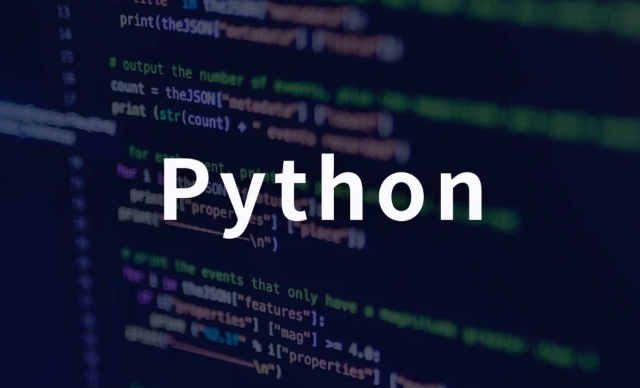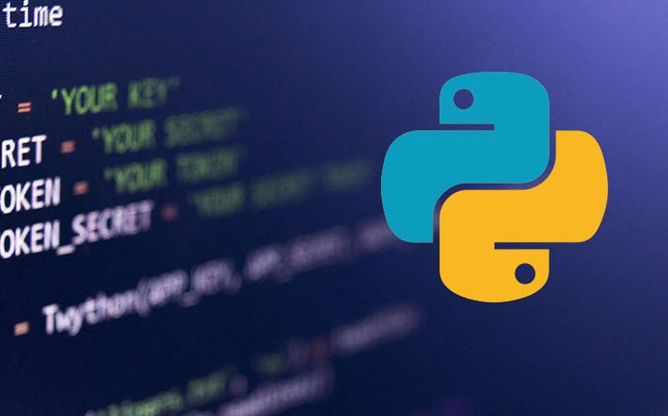How to parse an HTML table with Python and Pandas
Jul 10, 2025 pm 01:39 PMYes, you can parse HTML tables using Python and Pandas. First, use the pandas.read_html() function to extract the table, which can parse the HTML
The above is the detailed content of How to parse an HTML table with Python and Pandas. For more information, please follow other related articles on the PHP Chinese website!

Hot AI Tools

Undress AI Tool
Undress images for free

Undresser.AI Undress
AI-powered app for creating realistic nude photos

AI Clothes Remover
Online AI tool for removing clothes from photos.

Clothoff.io
AI clothes remover

Video Face Swap
Swap faces in any video effortlessly with our completely free AI face swap tool!

Hot Article

Hot Tools

Notepad++7.3.1
Easy-to-use and free code editor

SublimeText3 Chinese version
Chinese version, very easy to use

Zend Studio 13.0.1
Powerful PHP integrated development environment

Dreamweaver CS6
Visual web development tools

SublimeText3 Mac version
God-level code editing software (SublimeText3)

Hot Topics
 How do you connect to a database in Python?
Jul 10, 2025 pm 01:44 PM
How do you connect to a database in Python?
Jul 10, 2025 pm 01:44 PM
ToconnecttoadatabaseinPython,usetheappropriatelibraryforthedatabasetype.1.ForSQLite,usesqlite3withconnect()andmanagewithcursorandcommit.2.ForMySQL,installmysql-connector-pythonandprovidecredentialsinconnect().3.ForPostgreSQL,installpsycopg2andconfigu
 Python def vs lambda deep dive
Jul 10, 2025 pm 01:45 PM
Python def vs lambda deep dive
Jul 10, 2025 pm 01:45 PM
def is suitable for complex functions, supports multiple lines, document strings and nesting; lambda is suitable for simple anonymous functions and is often used in scenarios where functions are passed by parameters. The situation of selecting def: ① The function body has multiple lines; ② Document description is required; ③ Called multiple places. When choosing a lambda: ① One-time use; ② No name or document required; ③ Simple logic. Note that lambda delay binding variables may throw errors and do not support default parameters, generators, or asynchronous. In actual applications, flexibly choose according to needs and give priority to clarity.
 How to call parent class init in Python?
Jul 10, 2025 pm 01:00 PM
How to call parent class init in Python?
Jul 10, 2025 pm 01:00 PM
In Python, there are two main ways to call the __init__ method of the parent class. 1. Use the super() function, which is a modern and recommended method that makes the code clearer and automatically follows the method parsing order (MRO), such as super().__init__(name). 2. Directly call the __init__ method of the parent class, such as Parent.__init__(self,name), which is useful when you need to have full control or process old code, but will not automatically follow MRO. In multiple inheritance cases, super() should always be used consistently to ensure the correct initialization order and behavior.
 Access nested JSON object in Python
Jul 11, 2025 am 02:36 AM
Access nested JSON object in Python
Jul 11, 2025 am 02:36 AM
The way to access nested JSON objects in Python is to first clarify the structure and then index layer by layer. First, confirm the hierarchical relationship of JSON, such as a dictionary nested dictionary or list; then use dictionary keys and list index to access layer by layer, such as data "details"["zip"] to obtain zip encoding, data "details"[0] to obtain the first hobby; to avoid KeyError and IndexError, the default value can be set by the .get() method, or the encapsulation function safe_get can be used to achieve secure access; for complex structures, recursively search or use third-party libraries such as jmespath to handle.
 How to continue a for loop in Python
Jul 10, 2025 pm 12:22 PM
How to continue a for loop in Python
Jul 10, 2025 pm 12:22 PM
In Python's for loop, use the continue statement to skip some operations in the current loop and enter the next loop. When the program executes to continue, the current loop will be immediately ended, the subsequent code will be skipped, and the next loop will be started. For example, scenarios such as excluding specific values ??when traversing the numeric range, skipping invalid entries when data cleaning, and skipping situations that do not meet the conditions in advance to make the main logic clearer. 1. Skip specific values: For example, exclude items that do not need to be processed when traversing the list; 2. Data cleaning: Skip exceptions or invalid data when reading external data; 3. Conditional judgment pre-order: filter non-target data in advance to improve code readability. Notes include: continue only affects the current loop layer and will not
 How to scrape a website that requires a login with Python
Jul 10, 2025 pm 01:36 PM
How to scrape a website that requires a login with Python
Jul 10, 2025 pm 01:36 PM
ToscrapeawebsitethatrequiresloginusingPython,simulatetheloginprocessandmaintainthesession.First,understandhowtheloginworksbyinspectingtheloginflowinyourbrowser'sDeveloperTools,notingtheloginURL,requiredparameters,andanytokensorredirectsinvolved.Secon
 How to parse an HTML table with Python and Pandas
Jul 10, 2025 pm 01:39 PM
How to parse an HTML table with Python and Pandas
Jul 10, 2025 pm 01:39 PM
Yes, you can parse HTML tables using Python and Pandas. First, use the pandas.read_html() function to extract the table, which can parse HTML elements in a web page or string into a DataFrame list; then, if the table has no clear column title, it can be fixed by specifying the header parameters or manually setting the .columns attribute; for complex pages, you can combine the requests library to obtain HTML content or use BeautifulSoup to locate specific tables; pay attention to common pitfalls such as JavaScript rendering, encoding problems, and multi-table recognition.
 Implementing asynchronous programming with Python async/await
Jul 11, 2025 am 02:41 AM
Implementing asynchronous programming with Python async/await
Jul 11, 2025 am 02:41 AM
Asynchronous programming is made easier in Python with async and await keywords. It allows writing non-blocking code to handle multiple tasks concurrently, especially for I/O-intensive operations. asyncdef defines a coroutine that can be paused and restored, while await is used to wait for the task to complete without blocking the entire program. Running asynchronous code requires an event loop. It is recommended to start with asyncio.run(). Asyncio.gather() is available when executing multiple coroutines concurrently. Common patterns include obtaining multiple URL data at the same time, reading and writing files, and processing of network services. Notes include: Use libraries that support asynchronously, such as aiohttp; CPU-intensive tasks are not suitable for asynchronous; avoid mixed









